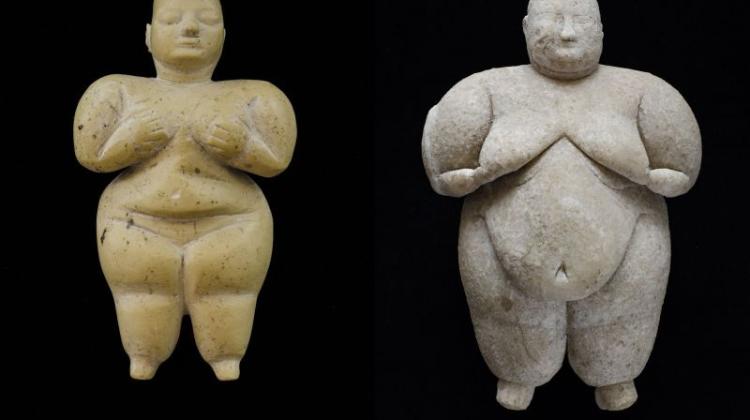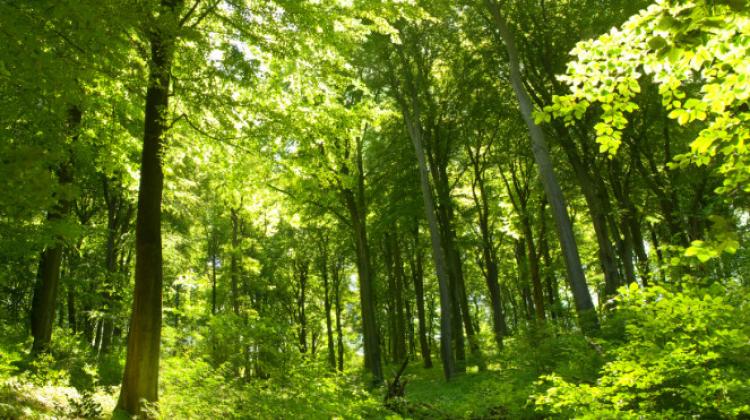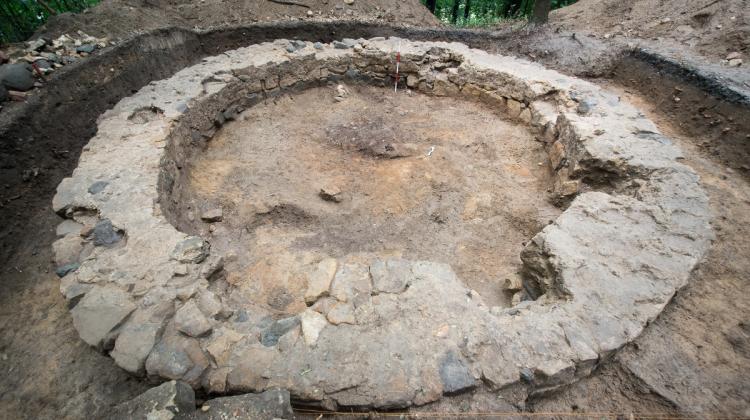Archaeologists discovered previously unknown fortified settlements in Mazury
 Broken clay vessels in the fortified settlement discovered in 2014 in Stary Folwark. Photo by Dariusz Wach
Broken clay vessels in the fortified settlement discovered in 2014 in Stary Folwark. Photo by Dariusz Wach
Unknown fortified settlements from the third century BC have been discovered by archaeologists in Stary Folwark, Tątławki and Wieprz. Their discovery was possible with the use of airborne laser scanning (ALS) of forested areas, previously difficult to access for archaeologists.
The findings have been reported by the study leader, Prof. Zbigniew Kobyliński from the Institute of Archaeology, Cardinal Stefan Wyszyński University in Warsaw.
By analyzing the digital terrain model obtained using LiDAR device, archaeologists discovered three previously unknown fortified settlements from the early Iron Age. These are small, oblong objects, situated on the natural moraine hills, steep slopes of which contain traces of fortifications in the form of three or four low ramparts and moats. Longer internal diameter of the area surrounded with ramparts usually does not exceed 30-40 m. The area of the settlements at the base of the outer rampart is a maximum of 100 m.
The small area, as well as stone pavements and regular areas covered by fragments of broken pottery, ash and charcoal found in the interiors, as well as circular grooves bearing traces of fire located outside the settlements, strongly suggest a cult, not a defensive purpose of the objects - the researchers believe. According to the archaeologists they were probably sacred spaces - places where magical and religious rites were performed, in which fire and ritual breaking of vessels played an important role.
Discoveries were made during the project "Catalogue of Warmia and Mazury Strongholds", funded by the National Programme for the Development of Humanities. Research carried out since 2012 includes not only aerial reconnaissance, but also analysis of cartographic and archival sources and geological drilling. In cases of confirmed settlements, researchers begin excavations on a limited scale, aimed to determine the functions of the objects and time of their establishment.
In cooperation with geologists and chemists, archaeologists also carry out innovative mineralogical and physico-chemical analysis of discovered fragments of pottery, including the content of fatty acids. Studies carried out by Prof. Joanna Kałużna-Czaplińska from Łódź University of Technology make it possible to determine the type of foods once stored in the vessels. Scientists also thoroughly examine the remnants of organic material. They analyse types of wood, fruits and seeds. On this basis, they recreate the environment in times of activity of the studied settlements.
Archaeologists examine the issue comprehensively. Therefore, they focus not only on the fortified settlements themselves, but also on their environment. Collaborating team led by Dr. Andrzej Pydyna conducts underwater search in neighbouring lakes. This has revealed the remains of medieval bridge crossings to the island, on which the settlement in Łodygowo and Iława are located.
"In the first three years of the project we used various methods to examine 64 locations in the western part of Warmia and Mazury, 26 of which turned out to be actual settlements. However, only few of them date back to the early Middle Ages, which means that the view of the Prussian settlement in the pre-Teutonic era should be verified" - said Prof. Kobyliński.
Discovered structures come from different periods - from the early Iron Age and the Middle Ages to the relics of brick buildings from the time of the Teutonic Knights.
The project "Catalogue of Warmia and Mazury Strongholds" is carried out by the Cardinal Stefan Wyszyński University in collaboration with the Institute of Archaeology and Ethnology PAS. Field research is headed by Dr. Jacek Wysocki, Dr. Joanna Wawrzeniuk, Dr. Magdalena Żurek. The program also involves experts from other universities and research institutes. In the coming years, the researchers will investigate the settlements in the area of Ostróda, Orneta and Lidzbark. The results of the program will include published books (first volume of the planned series of publications has already been published) and geo-website. Annual conferences are organized to present current research results. The next conference is scheduled for November 2015. It will be held in Iława.
PAP - Science and Scholarship in Poland
szz/ jjj/ mrt/
tr. RL
Przed dodaniem komentarza prosimy o zapoznanie z Regulaminem forum serwisu Nauka w Polsce.


















